Fisk University Administrators
Although at first, it functioned mainly as an elementary and normal school, Fisk was incorporated as Fisk University on August 22, 1867, following the founders' desires for a "first-class college" to educate black teachers. The college curriculum was organized by Adam K. Spence, a Scottish-born professor of foreign languages who left the University of Michigan in 1870 to replace Ogden as principal. Fisk graduated its first four college students in 1875, awarding them the B.A. degree for successfully completing courses in such liberal arts subjects as classical and foreign languages, mathematics, natural sciences, philosophy, history, and political science. In keeping with Fisk's religious orientation, weekly Bible classes were also required.
George L. White
Under Spence's leadership, it experienced dire financial problems and often had to delay salary payments to its hardworking and dedicated teaching staff, which was originally composed primarily of white missionaries sent by the AMA. The buildings were deteriorating and in need of repair. George L. White, Fisk's treasurer, and self-taught music instructor set out on October 6, 1871, with a group of nine of his best students for a fund-raising singing tour of the North and East. White named the group the Jubilee Singers. The Jubilee Singers introduced "slave songs" or spirituals to audiences and returned the following year with $20,000 to purchase a forty-acre campus site. Groundbreaking ceremonies were held July 1, 1873, for the erection of Jubilee Hall, now a historic landmark. The Singers remain a Fisk tradition.
The crisis alarmed the nation, and leaders rallied to "save Fisk." President Ronald Reagan donated $1,000, and the U.S. Secretary of Education, Terrel H. Bell, created a task force from the public and private sectors to review the financial difficulties facing Fisk University. As in 1871 Fisk once again withstood the tide of financial disaster, receiving scores of donations from alumni and friends. Henry Ponder, an economist, took the reins of the beleaguered institution in July 1984 as the tenth president and set out to pare back to a bare-bones operation.

In 2004 former U.S. Energy Secretary Hazel O'Leary was named president of the university, the fifth president in less than ten years. She retired from Fisk in 2013.
.jpg) In 1875, Erastus Milo Cravath became the first president of Fisk University when the position of principal was eliminated and the AMA gave up the direction of the institution, transferring titles and buildings to the Fisk trustees. Spence continued at Fisk as a professor of Greek until 1900. He joined other members of Fisk's white faculty in enrolling his own child at the increasingly reputable university.
In 1875, Erastus Milo Cravath became the first president of Fisk University when the position of principal was eliminated and the AMA gave up the direction of the institution, transferring titles and buildings to the Fisk trustees. Spence continued at Fisk as a professor of Greek until 1900. He joined other members of Fisk's white faculty in enrolling his own child at the increasingly reputable university.
Under Cravath's presidency Fisk's reputation grew, and as early as 1875 black professors joined the staff. Among the students who came from the North to study at Fisk was W. E. B. Du Bois, one of the university's most famous alumni, received his B.A. in 1888. When Cravath died in 1900, Fisk had graduated more than four hundred students who spread Fisk's fame across the United States in their careers as lawyers, professors, businessmen, ministers, and editors.
During the presidency of James G. Merrill (1900–1908), Fisk added a summer school for black teachers who wanted to improve their training, as well as many new science courses. When Merrill resigned, Fisk was again experiencing money troubles, since philanthropies at that time were more interested in investing in vocational and industrial schools such as the Tuskegee Institute. Many educators followed the line of reasoning that favored a "practical" education for blacks—training to enter the workforce. But Fisk remained staunchly in favor of offering the best liberal arts education it could to blacks in order to produce leaders for the black community.
 Under the administration of George A. Gates, president from 1909 to 1912, Fisk established the social science department for which it would become well known. It also began to receive considerable donations from such philanthropists as Andrew Carnegie, Julius Rosenwald, and John D. Rockefeller. These donations were largely results of tireless campaigning on behalf of the university by Booker T. Washington, whose wife and son were alumni of Fisk.
Under the administration of George A. Gates, president from 1909 to 1912, Fisk established the social science department for which it would become well known. It also began to receive considerable donations from such philanthropists as Andrew Carnegie, Julius Rosenwald, and John D. Rockefeller. These donations were largely results of tireless campaigning on behalf of the university by Booker T. Washington, whose wife and son were alumni of Fisk.
 Fayette Avery McKenzie, who took office after Gates's untimely death, brought with it an expansion of the curriculum and raising of standards, as well as a $2 million endowment campaign. By July 19, 1924, McKenzie was successful in securing half of the endowment. Although the school showed growth, McKenzie's dictatorial administration and strict student discipline led in 1924 and 1925 to one of the first student rebellions on a black college campus. Du Bois fueled the fire of the revolt by speaking out to other alumni against McKenzie. McKenzie was especially resented for his ingratiating behavior toward prominent white citizens of Nashville and his insistence on unobtrusive, passive behavior from the black students even in the face of antiblack violence. McKenzie resigned on April 16, 1925.
Fayette Avery McKenzie, who took office after Gates's untimely death, brought with it an expansion of the curriculum and raising of standards, as well as a $2 million endowment campaign. By July 19, 1924, McKenzie was successful in securing half of the endowment. Although the school showed growth, McKenzie's dictatorial administration and strict student discipline led in 1924 and 1925 to one of the first student rebellions on a black college campus. Du Bois fueled the fire of the revolt by speaking out to other alumni against McKenzie. McKenzie was especially resented for his ingratiating behavior toward prominent white citizens of Nashville and his insistence on unobtrusive, passive behavior from the black students even in the face of antiblack violence. McKenzie resigned on April 16, 1925.
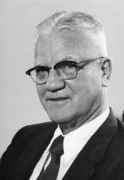 Thomas Elsa Jones, a Quaker missionary, became the last white president in 1926. His years are viewed as one of the most productive periods in Fisk's history. He eradicated the stricter regulations imposed on students until then. The $2 million endowments were attained. Black faculty increased to more than one-half, and the first black dean, Ambrose Caliver, was named when Jones took office. Jones placed emphasis on increasing graduate studies at the university and attracting research-oriented professors.
Thomas Elsa Jones, a Quaker missionary, became the last white president in 1926. His years are viewed as one of the most productive periods in Fisk's history. He eradicated the stricter regulations imposed on students until then. The $2 million endowments were attained. Black faculty increased to more than one-half, and the first black dean, Ambrose Caliver, was named when Jones took office. Jones placed emphasis on increasing graduate studies at the university and attracting research-oriented professors.
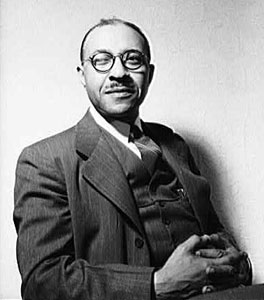 Charles Spurgeon Johnson was an American sociologist and college administrator, the first black president of historically black Fisk University, and a lifelong advocate for racial equality and the advancement of civil rights for African Americans and all ethnic minorities.
Charles Spurgeon Johnson was an American sociologist and college administrator, the first black president of historically black Fisk University, and a lifelong advocate for racial equality and the advancement of civil rights for African Americans and all ethnic minorities.
James Raymond Lawson, an alumnus, and scientist was inaugurated as president, replacing Stephen Junius Wright, Jr., who had been named president after Johnson's death. Enrollment reached 1,559 in 1972, the largest in the university's history. In 1977 the Department of the Interior designated the campus as a historical site in the National Register of Historic Places by the National Parks Service.
Meharry University Administrators
The founder and first president of Meharry Medical College was the New Hampshire native George Whipple Hubbard (1841-1921), a former Union soldier who had received his medical degree from the University of Nashville. While still in school, Hubbard began the work of building Meharry with himself as the sole instructor, religious advisor, and superintendent.
On February 1, 1921, John J. Mullowney, a 1908 graduate of the University of Pennsylvania and a former faculty member of Girard College in Philadelphia, became the second president of Meharry. Under his leadership, admission requirements were rigorously administered; the number of faculty members increased; research and hospital facilities were expanded, increasing the bed capacity to one hundred; outpatient clinics were reorganized according to specialty, and a hospital superintendent was employed. In 1923 Meharry received an “A” rating.
In 1938 the distinguished scholar Edward L. Turner assumed the post of president. Turner modified the curriculum of the medical school, insisting on a more scientific approach and stressing the importance of proper clinical procedures. During this time, Meharry began to experience financial difficulties, which plagued the institution throughout the 1940s. Turner resigned in 1944. Dr. M. D. Clawson served as president of Meharry from 1945 to 1950.
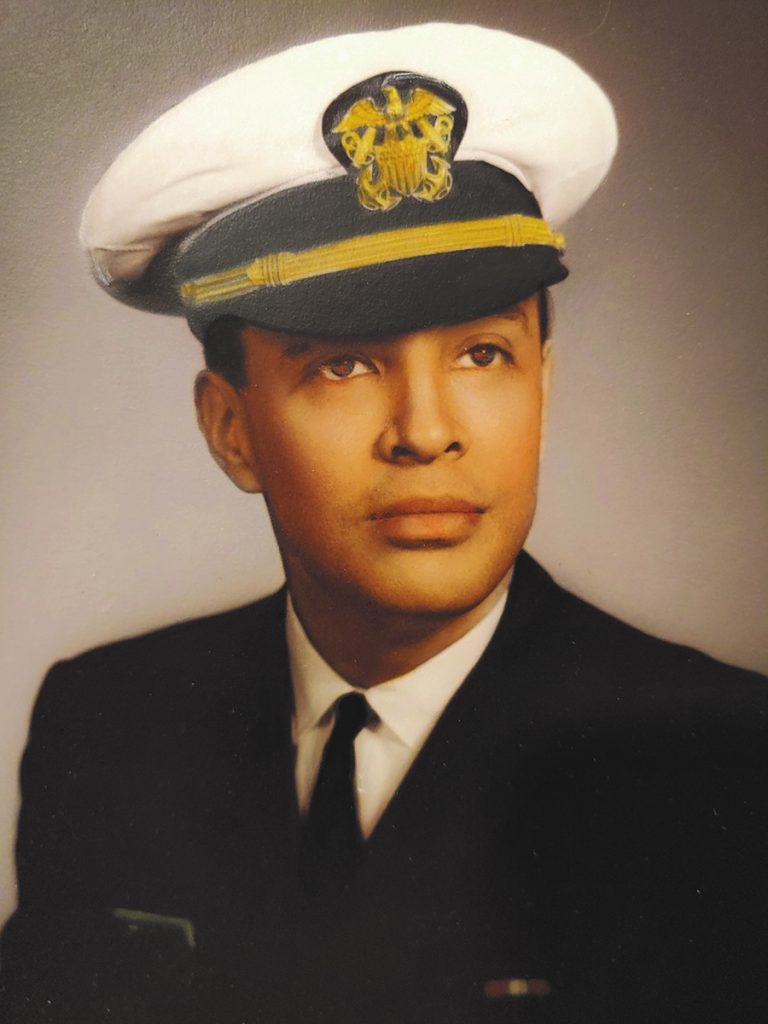 An interim administrative committee directed affairs until 1952, when Dr. Harold D. West, the first black president of the school, began his term. Under West, the school launched a $20 million fund drive, purchased land adjacent to the campus, and added a wing to the hospital. The school redefined its purpose, terminating the School of Nursing and the Division of Dental Technology in the early 1960s. Significant improvements also were made to the curriculum and facilities in the schools of medicine and dentistry.
An interim administrative committee directed affairs until 1952, when Dr. Harold D. West, the first black president of the school, began his term. Under West, the school launched a $20 million fund drive, purchased land adjacent to the campus, and added a wing to the hospital. The school redefined its purpose, terminating the School of Nursing and the Division of Dental Technology in the early 1960s. Significant improvements also were made to the curriculum and facilities in the schools of medicine and dentistry.
From 1966 to 1968 an interim committee managed Meharry until the former dean of the medical school, Lloyd Elam, was appointed president. Meharry then established a graduate school offering a Ph.D. degree in the basic sciences and a School of Allied Health Professions in conjunction with Tennessee State University and Fisk University. New buildings for the schools of medicine and dentistry and a new hospital were constructed in the 1970s. Elam provided Meharry with thirteen years of progressive leadership and continued his service to the school as a distinguished member of the teaching faculty.
In March 1981 Richard Lester, chairman of the Department of Radiology of the University of Texas Science Center and a member of Meharry’s board of trustees, assumed the duties of interim president for one year. In July 1982 David Satcher became the third black man to hold the position of president. Satcher rose to national prominence and was appointed director of the United States Center for Disease Control in Atlanta in 1993. In 1997 President Bill Clinton nominated Satcher for the position of surgeon general of the United States; he was confirmed the following year.
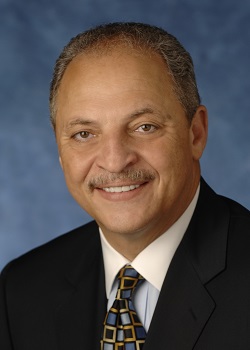 Dr. John E. Maupin Jr., the first alumnus and graduate of Meharry’s School of Dentistry to become the institution’s top administrator. Maupin became the ninth president on July 1, 1994. He was charged with overseeing the construction and renovation of facilities, merging the respective clinical staffs, and accomplishing the monumental job of solidifying the national community around the continued viability of Meharry Medical College. Maupin also would orchestrate the inauguration of the merged facilities on January 1, 1998.
Dr. John E. Maupin Jr., the first alumnus and graduate of Meharry’s School of Dentistry to become the institution’s top administrator. Maupin became the ninth president on July 1, 1994. He was charged with overseeing the construction and renovation of facilities, merging the respective clinical staffs, and accomplishing the monumental job of solidifying the national community around the continued viability of Meharry Medical College. Maupin also would orchestrate the inauguration of the merged facilities on January 1, 1998.
Meharry Medical College includes the School of Medicine, the School of Dentistry, the School of Graduate Studies and Research, the School of Allied Health Professions, the Metropolitan General Hospital of Nashville-Davidson County, two health centers, and the Harold D. West Basic Sciences Center.
Tennessee State University Administrators
President, 1912-1943
 From its founding date in 1912, Dr. William J. Hale became president of Tennessee Agricultural and Industrial College until his retirement in August 1943. Hale arrived in Nashville in January 1911 to supervise the construction of the facilities and develop the school's curricula. Handpicking the 13 faculty members from such notable institutions, Tennessee A&I opened its doors for the first time on June 19, 1912, and two days later enrolled 247 students for the summer term. In 1916, Hale received only 40 percent of the school's funds from the state with the rest coming from federal sources, tuitions, fees, and gifts from the African-American community. Hale expanded the school despite the limited resources provided by a general assembly and the State Board of Education. By 1944, the college produced the third-highest number of graduates among historically African-American universities. Under his leadership, Tennessee A&I State College became a notable African-American institution and one of Tennessee's best-known colleges.
From its founding date in 1912, Dr. William J. Hale became president of Tennessee Agricultural and Industrial College until his retirement in August 1943. Hale arrived in Nashville in January 1911 to supervise the construction of the facilities and develop the school's curricula. Handpicking the 13 faculty members from such notable institutions, Tennessee A&I opened its doors for the first time on June 19, 1912, and two days later enrolled 247 students for the summer term. In 1916, Hale received only 40 percent of the school's funds from the state with the rest coming from federal sources, tuitions, fees, and gifts from the African-American community. Hale expanded the school despite the limited resources provided by a general assembly and the State Board of Education. By 1944, the college produced the third-highest number of graduates among historically African-American universities. Under his leadership, Tennessee A&I State College became a notable African-American institution and one of Tennessee's best-known colleges.
President, 1943-1968
 From 1943, until his retirement in 1968, Dr. Walter S. Davis led Tennessee State University through an era of tremendous growth in areas as multifaceted as academics, facilities, and worldwide recognition. Tennessee Agricultural and Industrial State College achieved university status in 1951 and the Tennessee Board of Education elevated the university to a full-fledged land-grant university in 1957. Under Davis' leadership, 24 new buildings were constructed on the campus and it was during his tenure that athletes from Tennessee State University commanded the attention of the nation and the world by winning national championships and titles in football, basketball, and swimming, along with Olympic medals in track and field.
From 1943, until his retirement in 1968, Dr. Walter S. Davis led Tennessee State University through an era of tremendous growth in areas as multifaceted as academics, facilities, and worldwide recognition. Tennessee Agricultural and Industrial State College achieved university status in 1951 and the Tennessee Board of Education elevated the university to a full-fledged land-grant university in 1957. Under Davis' leadership, 24 new buildings were constructed on the campus and it was during his tenure that athletes from Tennessee State University commanded the attention of the nation and the world by winning national championships and titles in football, basketball, and swimming, along with Olympic medals in track and field.
President, 1968-1974
 In 1968, Dr. Andrew P. Torrence, also an alumnus, was named the university's third president. Throughout his relatively brief tenure, the university strengthened its focus on academics and introduced a broader array of offerings. It was during this time that the university, through a bill passed by the state legislature, formally dropped 'Agricultural and Industrial' from its name and became Tennessee State University, which is one of the most significant events during the Torrence presidency. Also, it was in 1968 that a Tennessee State University faculty member named Rita Sanders filed a lawsuit alleging a dual system of higher education in Tennessee based on race, which over the years evolved into Geier v. Tennessee. The court did not reach a decision until 2001.
In 1968, Dr. Andrew P. Torrence, also an alumnus, was named the university's third president. Throughout his relatively brief tenure, the university strengthened its focus on academics and introduced a broader array of offerings. It was during this time that the university, through a bill passed by the state legislature, formally dropped 'Agricultural and Industrial' from its name and became Tennessee State University, which is one of the most significant events during the Torrence presidency. Also, it was in 1968 that a Tennessee State University faculty member named Rita Sanders filed a lawsuit alleging a dual system of higher education in Tennessee based on race, which over the years evolved into Geier v. Tennessee. The court did not reach a decision until 2001.
 Interim President, 1974-1975
Interim President, 1974-1975
Dr. Charles B. Fancher began his career at Tennessee State University in 1962 and served in a number of positions, including interim president in 1974. From 1975 until his retirement in 1985, he was vice chancellor for Academic Affairs for the State University and Community College System of Tennessee. He has held memberships in many professional and civic organizations and has degrees from Talladega College, the University of Pittsburgh, and the University of Wisconsin.
President, 1975-1985
 Dr. Frederick S. Humphries demonstrated highly effective administration skills which resulted in the improvement and expansion of academic programs, upgraded faculty, increased enrollment and quality of students, and expanded scholarships and support activities. However, he will likely be remembered most for his bold and tenacious fight for the rights of a historically black university which was located in the same area as a historically white university when he insisted on the predominance of Tennessee State University over the University of Tennessee at Nashville (UTN). This ultimately led to the merger of TSU and UTN, with TSU becoming the surviving institution, heralded as one of the fairest and most important desegregation decisions of the 20th century. Humphries achieved a national reputation as a dedicated fighter for the cause of the continued existence of HBCUs and opportunities for minorities.
Dr. Frederick S. Humphries demonstrated highly effective administration skills which resulted in the improvement and expansion of academic programs, upgraded faculty, increased enrollment and quality of students, and expanded scholarships and support activities. However, he will likely be remembered most for his bold and tenacious fight for the rights of a historically black university which was located in the same area as a historically white university when he insisted on the predominance of Tennessee State University over the University of Tennessee at Nashville (UTN). This ultimately led to the merger of TSU and UTN, with TSU becoming the surviving institution, heralded as one of the fairest and most important desegregation decisions of the 20th century. Humphries achieved a national reputation as a dedicated fighter for the cause of the continued existence of HBCUs and opportunities for minorities.
Interim President, 1985-1986
 Dr. Roy P. Peterson, deputy executive director of the Kentucky Council for Higher Education, was appointed interim president of Tennessee State University in 1985. Peterson, a native from Louisiana, earned degrees from Southern University, the University of Oregon, and the University of Iowa. He served as the chief academic officer for the State Higher Education Board in Illinois prior to assuming a similar position with the Kentucky Council. Peterson led Tennessee State University toward the fulfillment of its role as an urban institution by broadening relationships within the greater Nashville community.
Dr. Roy P. Peterson, deputy executive director of the Kentucky Council for Higher Education, was appointed interim president of Tennessee State University in 1985. Peterson, a native from Louisiana, earned degrees from Southern University, the University of Oregon, and the University of Iowa. He served as the chief academic officer for the State Higher Education Board in Illinois prior to assuming a similar position with the Kentucky Council. Peterson led Tennessee State University toward the fulfillment of its role as an urban institution by broadening relationships within the greater Nashville community.
 Interim President, 1986-1987 (interim)
Interim President, 1986-1987 (interim)
President, 1987-1990
Noticing a need for expansion on campus to house a growing number of students and provide a modern facility, Dr. Otis L. Floyd began to secure funds for a large renovation project. He was the instrumental force in acquiring $112 million for the construction of the Master Plan project. Construction projects began in 1989, and under Floyd's plan, nearly all of the buildings on campus were renovated. Eight new buildings were constructed, including the Floyd- Payne Campus Center, the Ned McWherter Administration Building, the Wilma Rudolph Residence Center, and the Performing Arts Center. Floyd served as president until June 1990 and transitioned to become the first African-American chancellor of the Tennessee Board of Regents from July 1990 until his death in 1993. After his passing, in his honor, The Tennessee College of Public Relations Association established the Otis L. Floyd, Jr. Award for Excellence in Administration. In 1997, the Tennessee Board of Regents established the Dr. Otis L. Floyd Scholarship which is still being awarded to deserving students today. The students who receive the scholarship are charged with working to make an impact in education.
Interim President, 1990-1991
 Dr. George W. Cox served Tennessee State University for more than 20 years progressing during his tenure from a professor of education to vice president of academic affairs to interim president from July 1990 to April 1991. He was a distinguished member of several organizations and received numerous citations for his work in education, human relations, and public service. He earned degrees from LeMoyne-Owen College, Memphis State University, and the University of Tennessee.
Dr. George W. Cox served Tennessee State University for more than 20 years progressing during his tenure from a professor of education to vice president of academic affairs to interim president from July 1990 to April 1991. He was a distinguished member of several organizations and received numerous citations for his work in education, human relations, and public service. He earned degrees from LeMoyne-Owen College, Memphis State University, and the University of Tennessee.
President, 1991-2005
 During Dr. James A. Hefner's 14-year tenure as president of Tennessee State University, he oversaw the implementation of a $112 million capital improvement plan, secured by former President Floyd and as part of the Geier agreement that attempted to end race-based disparity in higher education spending in Tennessee. Several new buildings were built, including a campus center, an administration building, and a Performing Arts Center. Under his leadership, enrollment reached an all-time high of 9,100 students.
During Dr. James A. Hefner's 14-year tenure as president of Tennessee State University, he oversaw the implementation of a $112 million capital improvement plan, secured by former President Floyd and as part of the Geier agreement that attempted to end race-based disparity in higher education spending in Tennessee. Several new buildings were built, including a campus center, an administration building, and a Performing Arts Center. Under his leadership, enrollment reached an all-time high of 9,100 students.
President, 2005-2010
 Dr. Melvin N. Johnson began his tenure as the seventh president of Tennessee State University in 2005. Before serving as president, Johnson served as provost and vice chancellor for academic affairs and as a tenured professor of economics at Winston-Salem State University. He taught at the U.S. Air Force Academy and completed a distinguished military career as a lieutenant colonel. Under Johnson's leadership, he was instrumental in continuing to bring positive national attention to the university by recognizing the Freedom Riders with honorary degrees, engaging the university in the Tennessee Campus Compact, positioning the university to receive national awards for community service and engagement, obtaining $8 million for Race to the Top Funds by President Obama, opening the university's doors to flood victims and businesses, and obtaining Community Engagement Classification by the Carnegie Foundation for the Advancement of Teaching.
Dr. Melvin N. Johnson began his tenure as the seventh president of Tennessee State University in 2005. Before serving as president, Johnson served as provost and vice chancellor for academic affairs and as a tenured professor of economics at Winston-Salem State University. He taught at the U.S. Air Force Academy and completed a distinguished military career as a lieutenant colonel. Under Johnson's leadership, he was instrumental in continuing to bring positive national attention to the university by recognizing the Freedom Riders with honorary degrees, engaging the university in the Tennessee Campus Compact, positioning the university to receive national awards for community service and engagement, obtaining $8 million for Race to the Top Funds by President Obama, opening the university's doors to flood victims and businesses, and obtaining Community Engagement Classification by the Carnegie Foundation for the Advancement of Teaching.
Interim President, 2011
 Dr. Portia Holmes Shields was appointed interim president of Tennessee State University on January 2, 2011, becoming the first woman to lead this historic institution in its 100-year history. Shields holds a Ph.D. in Early Childhood/ Elementary Education from the University of Maryland, a Master of Arts degree in Remedial Reading from George Washington University, and a bachelor's degree in Elementary Education from District of Colombia Teachers College. She was awarded Post-Doctoral Fellowship to study in West Africa by the African-American Institute in New York City. Shields has served in various capacities in the field of education. At Howard University, she served as dean of the School of Education, Director of Medical Education and Biomedical Communications. She also served as the first female president of Albany State University from 1996 to 2005. In 2007, she became the chief executive officer and chief academic officer at Concordia College until 2009.
Dr. Portia Holmes Shields was appointed interim president of Tennessee State University on January 2, 2011, becoming the first woman to lead this historic institution in its 100-year history. Shields holds a Ph.D. in Early Childhood/ Elementary Education from the University of Maryland, a Master of Arts degree in Remedial Reading from George Washington University, and a bachelor's degree in Elementary Education from District of Colombia Teachers College. She was awarded Post-Doctoral Fellowship to study in West Africa by the African-American Institute in New York City. Shields has served in various capacities in the field of education. At Howard University, she served as dean of the School of Education, Director of Medical Education and Biomedical Communications. She also served as the first female president of Albany State University from 1996 to 2005. In 2007, she became the chief executive officer and chief academic officer at Concordia College until 2009.
Dr. Glenda 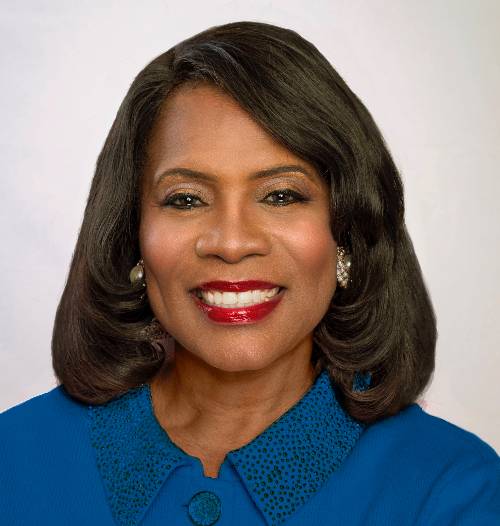 Baskin Glover began serving as President of Tennessee State University on January 2, 2013. She has advanced a five-point vision that includes: (1) academic progress and customer service, (2) fundraising and partnerships, (3) diversity and inclusion, (4) shared governance, and (5) business outreach.
Baskin Glover began serving as President of Tennessee State University on January 2, 2013. She has advanced a five-point vision that includes: (1) academic progress and customer service, (2) fundraising and partnerships, (3) diversity and inclusion, (4) shared governance, and (5) business outreach.
Dr. Glover was formerly the Dean of the College of Business at Jackson State University in Jackson, Miss., where she led the College of Business throughout the accreditation process and spearheaded the implementation of the nation’s first Ph.D. in Business at an HBCU. She is a certified public accountant, an attorney, and is one of two African American women to hold the Ph.D.-CPA-JD combination in the nation.
Dr. Glover's educational development began as a student at Tennessee State University, where she majored in mathematics. After graduating with honor with a Bachelor of Science degree, she pursued the Master of Business Administration at Clark Atlanta University. She then completed her doctorate in business from George Washington University and later completed her law degree from Georgetown University.
Prior to joining Jackson State University, Dr. Glover served as Chairperson of the Department of Accounting at Howard University. Her past employment also includes positions as Senior Vice President and Chief Financial Officer of an engineering firm, a tax manager at a major public utility company, and an accountant with a Big-Four CPA firm.
Dr. Glover has been a corporate board member of three publicly traded corporations. These include Citigroup-Student Loan Corporation, Pinnacle Financial Partners, and First Guaranty Bancshares. She served as a member or chair of the Audit Committee on each board, or as the board’s financial expert.
Dr. Glover is the author of more than one hundred articles and papers and is regarded as one of the nation’s experts on corporate governance. She is a member of several professional, civic, and non-profit organizations, and is the recipient of numerous awards and honors. She is married to Charles Glover, and they have two adult children, Attorney Candace Glover and Dr. Charles Glover II.